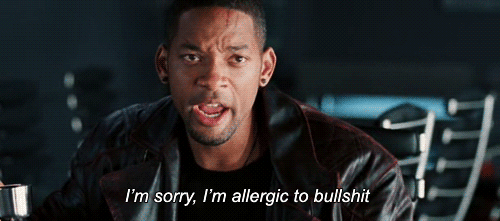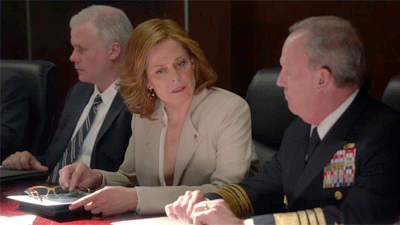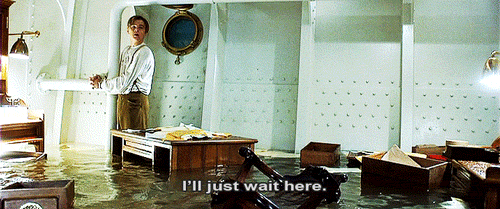I saw Alien for my film class just a few months ago, and when I noticed that Aliens was on my bucket list, I realized that it couldn’t be more fitting for my first film of the year. So I dug through my parents’ movies and whipped out the… yes… VHS of Aliens. And as I plugged the VCR player into my projector and began the rewinding process, I started some preliminary research.
The 1986 remake of the famous Ridley Scott film, Alien, came a whopping seven years after its predecessor. 20th Century Fox felt the film hadn’t been enough of a commercial success for a sequel, even though our now famous Avatar and Titanic director James Cameron had come to them with an interest in spearheading a sequel as early as 1983. The studio basically told him that he could only make it if his current project, The Terminator, was a success.

About 78 million dollars later, Cameron was given the green light. After a few disputes between Cameron, Fox, and the actress playing the first film’s heroine and only survivor, Sigourney Weaver, it was decided that the film would follow a similar formula to the critically successful and Oscar winning (well… Best Visual Effects) Alien.
Because of the familiar background and characters that the second film begins with, I feel compelled to immediately compare the two. The idea of “Ridley Scott vs. James Cameron” stuck with me the entire time I watched it, and that perspective actually helped me see some interesting distinctions in not only storytelling but also in directing style. The second film kept the same basic “anti-establishment” theme as the first one, but took it in its own direction that is not only imaginative, but also satisfying as a fan of the first one. The big business of the Weyland-Yutani Corporation is immediately cast as the corrupt and greedy force of the film, a similar thread to the first film that famously declared its employees “expendable” in comparison to the specimen they wanted from the alien planet. While Ripley, Sigourney’s character, seems to be the only level-headed person left in the world she now inhabits, she is labeled as mentally unstable about five minutes into the film. While post-traumatic stress disorder certainly fits due to her frequent nightmares about an alien clawing out of her stomach, pathological lying is not in her arsenal.

What really separates this film from the second one is that it dives right into the action. Ridley Scott takes painstaking time to set up the mass mayhem that takes place aboard the spaceship Nostromo, which is the kind of psychological horror film that I enjoy. This time around, Cameron is entirely aware that the audience has already seen the creature and expects to pick up basically where the last film left off in our understanding of the planet.
Another thing I picked up on was an uncanny similarity to Avatar, which kind of made me feel like Cameron had been stringing us along for decades (well, not me in particular) until the release of his biggest work to date. There are robots that humans control (those big Transformer-looking things used to lift materials or fight blue aliens), a manipulative and greedy corporation that plans to stop at nothing to get what it wants, and Sigourney Weaver fighting for the good guys.
 iThe premise of the film is unique in the way a sequel should be, but also close enough to the original to keep our interest. When Ripley put herself to sleep at the end of the first film, she expected to awake a short while later on earth. Instead, fifty-seven years later, Ripley is found with her ship drifting through space aimlessly. She is deemed insane for her stories about the alien, and soon finds out that several dozen humans now populate the planet where her entire crew was killed. But shortly after, earth loses contact with the planet and the corporation realizes that Ripley might have been right. They send her to the planet with a ragtag team of marines in hopes of finding any survivors. They find a small girl living in the garbage shoot, whose name is Newt but reminds me too much of Cosette to call her anything else. The marines then find out that the tracking devices on the humans all point to one room, and when they get there it turns out to be the hive of the aliens.
iThe premise of the film is unique in the way a sequel should be, but also close enough to the original to keep our interest. When Ripley put herself to sleep at the end of the first film, she expected to awake a short while later on earth. Instead, fifty-seven years later, Ripley is found with her ship drifting through space aimlessly. She is deemed insane for her stories about the alien, and soon finds out that several dozen humans now populate the planet where her entire crew was killed. But shortly after, earth loses contact with the planet and the corporation realizes that Ripley might have been right. They send her to the planet with a ragtag team of marines in hopes of finding any survivors. They find a small girl living in the garbage shoot, whose name is Newt but reminds me too much of Cosette to call her anything else. The marines then find out that the tracking devices on the humans all point to one room, and when they get there it turns out to be the hive of the aliens.
As soon as the action really got started, and the aliens killed all of the characters whose names I hadn’t yet bothered to learn, the deeper plots really got rolling. The group is trapped in one corner of the planet’s colony, with walls of automatic weapons set to destroy any oncoming aliens. The character of Burke, who is the embodiment of the corporation, shows his true colors when he locks Ripley and Newt in a room with two of the “impregnating” aliens that lay the eggs in a host’s stomach. Burke thought he could sneak the aliens back to earth in Ripley and Newt’s stomachs, but he dies minutes later when the surviving marines’ barricade is invaded.

I don’t want to mention any spoilers, but basically the movie has a fantastic ending that stays true to the first film but also adds the interesting twist that Ripley isn’t the only one to survive! Aliens ranks at #58 on the IMDB Top 250, as compared to #40 for Alien, although the sequel has 100% on Rotten Tomatoes while the first has 97%. Overall, I definitely plan on seeing the next two in the franchise, and couldn’t recommend them more highly to anyone who is interested in seeing a classic science fiction thriller directed by the man who brought you Titanic.

No comments:
Post a Comment